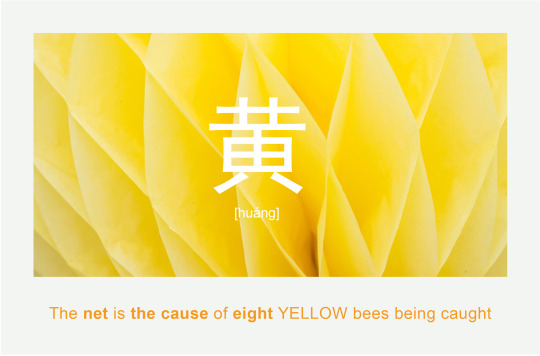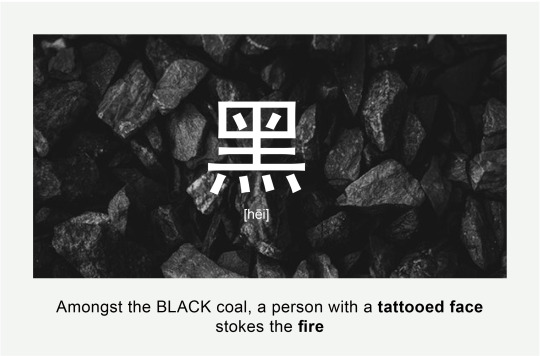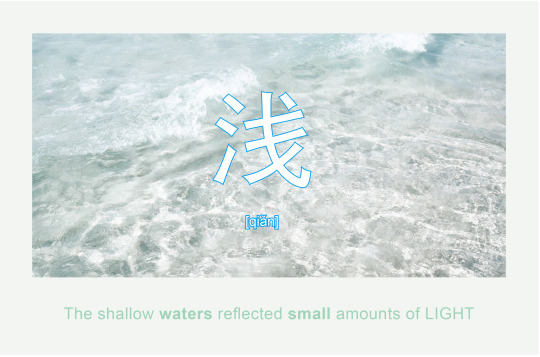Text
here’s an interesting internet word i just learned:
垢作る(あかつくる) = to make an account (on a website)
the use of 垢 is as an ateji from アカウントを作る! 💻🖱
466 notes
·
View notes
Text
Are you an intermediate or advanced Japanese language learner looking for things to practice reading? I found this cool website called WURK @ https://eigobu.jp/. Their subtitle is 働くあなたのため学びのメディア which if you do/don’t need help translating it… might help you figure out if this site is for you.
On the left you’ll find 5 main categories:
日本語
英語
心理
教養
テクノロジー
Lately, I’ve been reading about Japanese internet slang ネット用語 under 日本語. I have no shame in saying I read sentences more than twice. I don’t have a lot of reading material or access to borrow them so I’m not too hard on myself, we all have to start somewhere. Anyway, the link to that specific category is here: https://eigobu.jp/magazine/category/internet-slang
I don’t normally make these posts, but I hope someone can make good use of it too.
108 notes
·
View notes
Text
On Consuming Content “Below Your Level”
I recently saw a post of tips for language learners that warned against consuming content (such as books or shows) that was below your level, which this person described as something where you know most/all of the vocabulary. It painted this time spent as a waste, as if the only reason for immersing in your target language is to learn more vocabulary. I have to disagree.
Any time spent in your target language is time well spent and is worthwhile. No matter the level of the content and no matter how well you understand it. There are always benefits to consuming content (especially that made for natives!) in your TL. Even if you understand every single word, you might learn a new grammar concept. Even if you understand all of the words and grammar, you might pick up on some slang. Immersing in your target language teaches more than just vocabulary and grammar.
Even if you aren’t learning tangible things, immersing is important to a language learner’s journey. It can ingrain things that are harder to learn from a textbook, such as speaking cadence or sentence structure.
Additionally, the end goal is always to be able to completely understand things with fluency and ease. If I didn’t want to understand things in a different language, I just wouldn’t study it, not look for the most difficult piece of literature in my TL just so that I can maybe pick up on a few obscure terms that I’ll never see again. Being able to fully understand things in your target language is awesome! It’s a huge confidence booster, especially the first time you experience it in a new language. You should celebrate being able to fully understand something in your target language, not feel guilty over it.
TLDR; there is no such thing as “wasted time” when immersing in your target language. If you want to read or watch something, you should do it without worrying if you’ll learn enough vocabulary from it for it to be worth your while. If it’s in your target language it’s worth your while.
391 notes
·
View notes
Text
If you’re a Japanese blog, langblr, or anything in between, like this so I can follow u!♡
34 notes
·
View notes
Text








More screenshots released over the course of today seem to support the theory that everyone starts on their island with a Jock and Uchi villager.
How do we all feel about this?
1K notes
·
View notes
Text
テレワークの単語
Work From Home Vocabulary

Some words related to working from home (from daily vocabulary, teleconference software, etc.):
テレワーク telework (work from home).
通話 つうわ telephone call, voice call
取り込む 取り込む to be busy
発表中 はっぴょうちゅう presenting
連絡可能 れんらくかのう available (lit. it’s possible to contact)
退席中 たいせきちゅう away, unavailable (lit. away from one’s seat)
状態不安 じょうたいふめい status unknown
制御を要求 せいぎょをようきゅう request control
共有 きょうゆう sharing (files, devices on a network, posts on social media, etc.)
表示 ひょうじ display (show on screen)
180 notes
·
View notes
Text
Colours: RADICAL Vocab Flashcards
Thought i’d try a slightly different approach, particularly for the nouns to remember them. By breaking down individual meanings of the radicals within each character + pairing with a context driving trigger sentence. With Chinese, the radicals tell a story of how the word came to be, so perhaps looking at Chinese characters through that approach will encourage another level of long-term memory.
**Radical meanings are in bold + the vocabulary is CAPITALISED















659 notes
·
View notes
Text
“一頭牛,兩匹馬, yì tóu niú, liǎng pǐ mǎ, 三條魚,四隻鴨, sān tiáo yú, sì zhī yā, 五本書,六枝筆, wǔ běn shū, liù zhī bǐ, 七棵果樹八朵花。 qī kè guǒshù bā duǒ huā. 使用詞語要恰當, shǐyòng cíyǔ yào qiàdàng, 搭配不好出笑話。 dāpèi bù hǎo chū xiàohuà.”
—
measure word children’s song! (量詞歌)
very loose translation, and of course the MW don’t really carry over:
“A head of cattle, two horses
three fish, four ducks
five books, six pens
seven fruit trees, eight flowers
you have to pair the appropriate words
or else it’ll come out a joke”
For my Mandarin class we have to memorize two songs and a story a week, and it’s a pain in the ass. But look at this handy little one with measure words from last week. (and now you know who to ask for all the kids’ song you could want)
112 notes
·
View notes
Text
Made a studygram
Finally got myself to make a studygram and keep track of my study, if you have instagram please feel free to check it out and contact in case you study languages too <3
https://www.instagram.com/polyglot.axolotl/

6 notes
·
View notes
Text
you might think the best part of langblr is the motivation and community.
you’re mistaken.
it’s really the
✨duolingo owl memes✨
3K notes
·
View notes
Text

coming soon: the duolingo owl will break into your home at night and beat the shit out of you if you don’t know the word for potato in french
172K notes
·
View notes
Text
日本の都道府県


Japan’s Prefectures 日本の都道府県
Hokkaidō 北海道
1. Hokkaidō 北海道
Tōhoku 東北
2. Aomori 青森
3. Iwate 岩手
4. Miyagi 宮城
5. Akita 秋田
6. Yamagata 山形
7. Fukushima 福島
Kantō 関東
8. Ibaraki 茨城
9. Tochigi 栃木
10. Gunma 群馬
11. Saitama 埼玉
12. Chiba 千葉
13. Tokyo 東京(都)
14. Kanagawa 神奈川
Chūbu 中部
15. Niigata ��潟
16. Toyama 富山
17. Ishikawa 石川
18. Fukui 福井
19. Yamanashi 山梨
20. Nagano 長野
21. Gifu 岐阜
22. Shizuoka 静岡
23. Aichi 愛知
Kansai 関西
24. Mie 三重
25. Shiga 滋賀
26. Kyoto 京都(府)
27. Osaka 大阪(府)
28. Hyōgo 兵庫
29. Nara 奈良
30. Wakayama 和歌山
Chūgoku 中国
31. Tottori 鳥取
32. Shimane 島根
33. Okayama 岡山
34. Hiroshima 広島
35. Yamaguchi 山口
Shikoku 四国
36. Tokushima 徳島
37. Kagawa 香川
38. Ehime 愛媛
39. Kōchi 高知
Kyūshū 九州
40. Fukuoka 福岡
41. Saga 相模
42. Nagasaki 長崎
43. Kumamoto 熊本
44. Ōita 大分
45. Miyazaki 宮崎
46. Kagoshima 鹿児島
Okinawa 沖縄
47. Okinawa 沖縄
Japan has 47 prefectures (都道府県 とどうふけん). 43 are prefectures or ー県 (けん), 1 circuit or ー道 (ど) [Hokkaidō], 1 metropolis or ー都 (と) [Tokyo], and 2 urban prefectures or ー府 (ふ) [Kyoto, Osaka].
1K notes
·
View notes
Video
2K notes
·
View notes
Text

0.25 x 0.75
= ¼ x ¾
= 3/16 or 0.1875
れーてんにご かける れーてんななご は よんぶんのいち かける よんぶんのさん で じゅうろくぶんのさん もしくは れーてんいちはちななご
1K notes
·
View notes
Text
Lesser Known Language Learning Tips
((ways that get you closer to learning as you did with your first language))
–most ideas were found in “How to Learn a Language : INPUT (why most methods don’t work)” (see below)
1. Context
Comprehensible input is key. Receiving the language in “messages” that you can understand. Having visual aids (show/movie) or not being completely blind to the content (reading a book you already know in a different language) are good examples.
Acquisition not just rote memorization is the point. In one video I watched this was explained as: being told a joke and immediately getting it vs. having the details of a joke explained to you. You will hold onto that information because it made intuitive sense to you (and also maybe was interesting to you). Relying on your brain’s natural pattern recognition systems will do you better.
2. Maximizing Input
If you would watch a video in a foreign language, it’s best to watch with subtitles in that language and watch with a good amount of focus. Reading a book is alright as well but the input isn’t as great because you don’t have all the sensory information available in videos (and especially if you consider the rate of input). Also, you would be driven to look more words and grammar structures up in a book (most of which you won’t even retain). Allowing your brain to receive this information passively is actually good! You won’t notice all that your brain absorbs in that moment but in downtime, your subconscious behind to recall and connect and store details, or certain small details may resurface later. Stricter forms of learning shouldn’t be done away with entirely of course, it can trigger acquisition to some degree anyway. And if you’re taking a class, acquisition isn’t always the quickest way to learn the material.
3. Talking =/= Practice
Talking and conversations themselves are not the key for language acquisition. Instead, shadowing seems to be a more important method to use. Shadowing consists of watching native speakers (preferably in video) and mimicking them. Copying the movements of their mouths and getting a hang of the phonemes in the language are something that this method offers. You are also bound to begin distinguishing between different accents and colloquial vs formal speech. When starting with a new language (especially one with vastly different sounds from any you speak), it is important not to overextend yourself. Don’t reach the point of frustration. It’s suggested that you begin with just a few syllables. You can slowly extend the amount of time you spend in practice. Additional tips: slowing down the video + recording your voice to track your inprovement in pronunciation
4) Making your experience positive
Immediately forcing yourself to speak with other people is actually not the greatest for everyone. You may start associating the language with negativity due to embarrassment and shame. As a result, you may be less inclined to study or place mental blocks in your mind. Causing yourself to get overly frustrated while studying is also not a good idea.
undefined
youtube
2K notes
·
View notes
Text
Passed the N3 (after 4 tries)

Yeah, I'm super mediocre, but it's a nice thing to finally being able to pass it. Next is the HSK 4 this May!!!
7 notes
·
View notes







